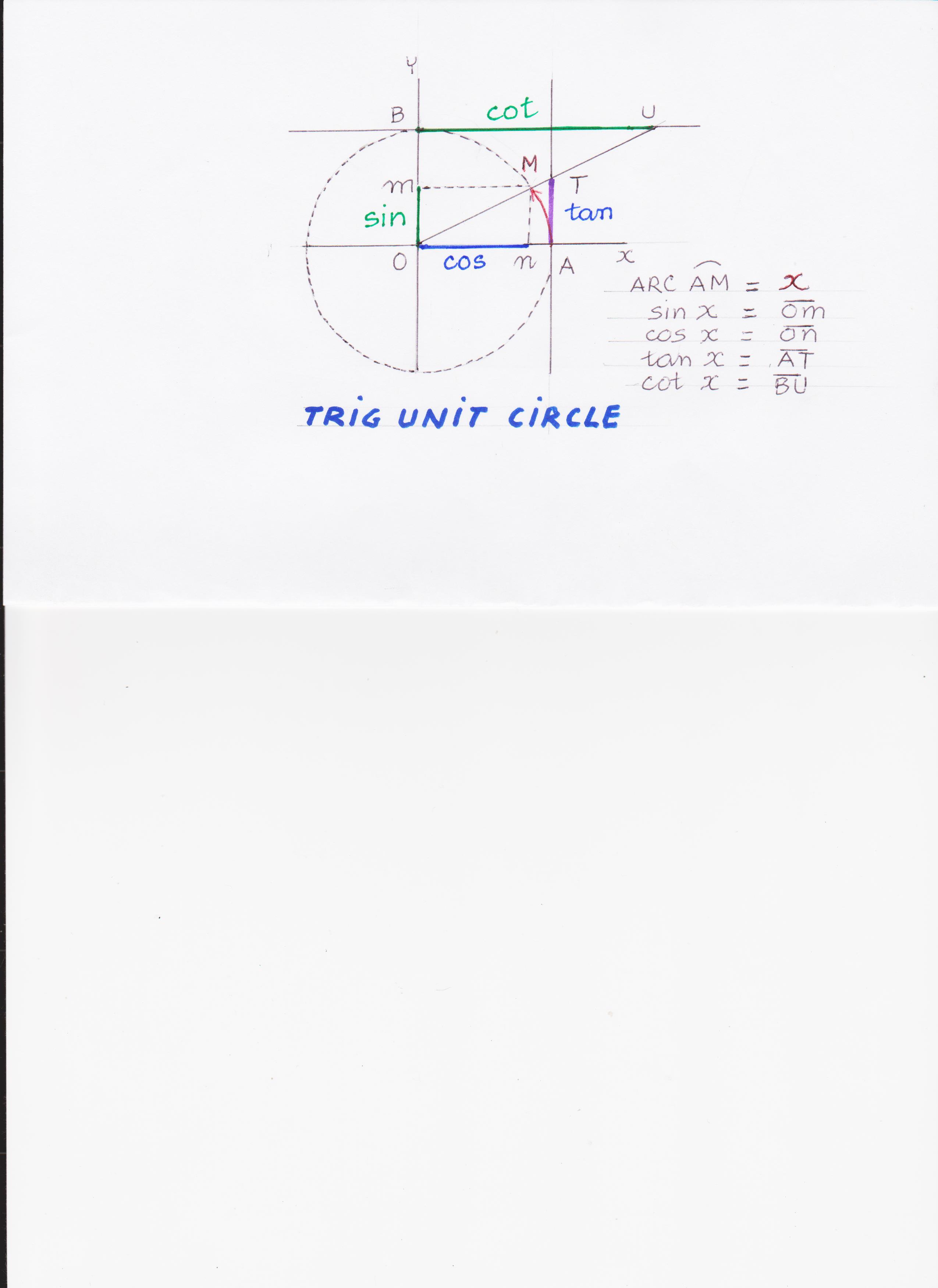Plz help me how unit circle works plz ?
2 Answers
The unit circle is the set of points one unit from the origin:
It has a common trigonometric parametric form:
Here's a non-trigonometric parameterization:
Explanation:
The unit circle is the circle of radius 1 centered on the origin.
Since a circle is the set of point equidistant from a point, the unit circle is a constant distance of 1 from the origin:
That's the non-parametric equation for the unit circle. Typically in trig we're interested in the parametric from, where each point on the unit circle is a function of a parameter
As
We verify
Students invariably reach for this trigonometric parameterization of the unit circle. But it's not the only one. Consider
As
We verify
This parameterization corresponds to the geometric construction of half an angle. We set the original angle as the center of a circle. The angle's rays will cross the circle at two points. Any angle subtended by those two points, i.e. angle whose vertex is on the circle and whose rays pass through the two points, will be half the original angle.
The trig unit circle has many functions.
Explanation:
- The trig unit circle mainly defines how trigonometric functions work. Consider the arc AM, with extremity M, that rotates counterclockwise on the unit circle. Its projections on the 4 axis
define the 4 main trig functions.
The axis OA defines the function f(x) = sin x
The axis OB defines the function: f(x) = cos x
The axis AT defines the function: f(x) = tan x
The axis BU defines the function f(x) = cot x. - The Unit circle is used as proof to solve trig equations.
For example. Solve#sin x = sqrt2/2#
The unit circle gives 2 solutions, that are 2 acs x that have the same sin value#(sqrt2/2)# -->#x = pi/4# , and#x = (3pi)/4# - The unit circle also helps on how to solve trig inequalities.
For example. Solve#sin x > sqrt2/2# .
The unit circle shows that#sin x > sqrt2/2# when the arc x varies inside the interval#(pi/4, (3pi)/4)# .



